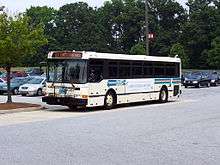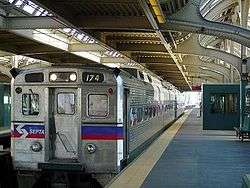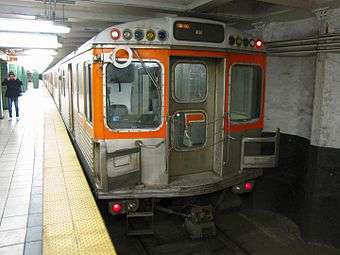Paoli/Thorndale Line
| Paoli/Thorndale Line | |||||||||||||||||||||||||||||||||||||||||||||||||||||||||||||||||||||||||||||||||||||||||||||||||||||||||||||||||||||||||||||||||||||||||||||||||||||||||||||||||||||||||||||||||||||||||||||||||||||||||||||||||||||||||||||||||
|---|---|---|---|---|---|---|---|---|---|---|---|---|---|---|---|---|---|---|---|---|---|---|---|---|---|---|---|---|---|---|---|---|---|---|---|---|---|---|---|---|---|---|---|---|---|---|---|---|---|---|---|---|---|---|---|---|---|---|---|---|---|---|---|---|---|---|---|---|---|---|---|---|---|---|---|---|---|---|---|---|---|---|---|---|---|---|---|---|---|---|---|---|---|---|---|---|---|---|---|---|---|---|---|---|---|---|---|---|---|---|---|---|---|---|---|---|---|---|---|---|---|---|---|---|---|---|---|---|---|---|---|---|---|---|---|---|---|---|---|---|---|---|---|---|---|---|---|---|---|---|---|---|---|---|---|---|---|---|---|---|---|---|---|---|---|---|---|---|---|---|---|---|---|---|---|---|---|---|---|---|---|---|---|---|---|---|---|---|---|---|---|---|---|---|---|---|---|---|---|---|---|---|---|---|---|---|---|---|---|---|---|---|---|---|---|---|---|---|---|---|---|---|---|---|---|
|
A westbound Paoli/Thorndale Line train departing from the Bryn Mawr, PA, Station. | |||||||||||||||||||||||||||||||||||||||||||||||||||||||||||||||||||||||||||||||||||||||||||||||||||||||||||||||||||||||||||||||||||||||||||||||||||||||||||||||||||||||||||||||||||||||||||||||||||||||||||||||||||||||||||||||||
| Overview | |||||||||||||||||||||||||||||||||||||||||||||||||||||||||||||||||||||||||||||||||||||||||||||||||||||||||||||||||||||||||||||||||||||||||||||||||||||||||||||||||||||||||||||||||||||||||||||||||||||||||||||||||||||||||||||||||
| Type | Commuter rail line | ||||||||||||||||||||||||||||||||||||||||||||||||||||||||||||||||||||||||||||||||||||||||||||||||||||||||||||||||||||||||||||||||||||||||||||||||||||||||||||||||||||||||||||||||||||||||||||||||||||||||||||||||||||||||||||||||
| System | SEPTA | ||||||||||||||||||||||||||||||||||||||||||||||||||||||||||||||||||||||||||||||||||||||||||||||||||||||||||||||||||||||||||||||||||||||||||||||||||||||||||||||||||||||||||||||||||||||||||||||||||||||||||||||||||||||||||||||||
| Status | Operating | ||||||||||||||||||||||||||||||||||||||||||||||||||||||||||||||||||||||||||||||||||||||||||||||||||||||||||||||||||||||||||||||||||||||||||||||||||||||||||||||||||||||||||||||||||||||||||||||||||||||||||||||||||||||||||||||||
| Termini |
Temple University Thorndale | ||||||||||||||||||||||||||||||||||||||||||||||||||||||||||||||||||||||||||||||||||||||||||||||||||||||||||||||||||||||||||||||||||||||||||||||||||||||||||||||||||||||||||||||||||||||||||||||||||||||||||||||||||||||||||||||||
| Stations | 26 | ||||||||||||||||||||||||||||||||||||||||||||||||||||||||||||||||||||||||||||||||||||||||||||||||||||||||||||||||||||||||||||||||||||||||||||||||||||||||||||||||||||||||||||||||||||||||||||||||||||||||||||||||||||||||||||||||
| Daily ridership | 22,359[1]:94 | ||||||||||||||||||||||||||||||||||||||||||||||||||||||||||||||||||||||||||||||||||||||||||||||||||||||||||||||||||||||||||||||||||||||||||||||||||||||||||||||||||||||||||||||||||||||||||||||||||||||||||||||||||||||||||||||||
| Website | septa.org | ||||||||||||||||||||||||||||||||||||||||||||||||||||||||||||||||||||||||||||||||||||||||||||||||||||||||||||||||||||||||||||||||||||||||||||||||||||||||||||||||||||||||||||||||||||||||||||||||||||||||||||||||||||||||||||||||
| Operation | |||||||||||||||||||||||||||||||||||||||||||||||||||||||||||||||||||||||||||||||||||||||||||||||||||||||||||||||||||||||||||||||||||||||||||||||||||||||||||||||||||||||||||||||||||||||||||||||||||||||||||||||||||||||||||||||||
| Operator(s) | SEPTA Regional Rail | ||||||||||||||||||||||||||||||||||||||||||||||||||||||||||||||||||||||||||||||||||||||||||||||||||||||||||||||||||||||||||||||||||||||||||||||||||||||||||||||||||||||||||||||||||||||||||||||||||||||||||||||||||||||||||||||||
| Rolling stock | Electric Multiple Units | ||||||||||||||||||||||||||||||||||||||||||||||||||||||||||||||||||||||||||||||||||||||||||||||||||||||||||||||||||||||||||||||||||||||||||||||||||||||||||||||||||||||||||||||||||||||||||||||||||||||||||||||||||||||||||||||||
| Technical | |||||||||||||||||||||||||||||||||||||||||||||||||||||||||||||||||||||||||||||||||||||||||||||||||||||||||||||||||||||||||||||||||||||||||||||||||||||||||||||||||||||||||||||||||||||||||||||||||||||||||||||||||||||||||||||||||
| Track gauge | 4 ft 8 1⁄2 in (1,435 mm) standard gauge | ||||||||||||||||||||||||||||||||||||||||||||||||||||||||||||||||||||||||||||||||||||||||||||||||||||||||||||||||||||||||||||||||||||||||||||||||||||||||||||||||||||||||||||||||||||||||||||||||||||||||||||||||||||||||||||||||
| Electrification | Catenary | ||||||||||||||||||||||||||||||||||||||||||||||||||||||||||||||||||||||||||||||||||||||||||||||||||||||||||||||||||||||||||||||||||||||||||||||||||||||||||||||||||||||||||||||||||||||||||||||||||||||||||||||||||||||||||||||||
| |||||||||||||||||||||||||||||||||||||||||||||||||||||||||||||||||||||||||||||||||||||||||||||||||||||||||||||||||||||||||||||||||||||||||||||||||||||||||||||||||||||||||||||||||||||||||||||||||||||||||||||||||||||||||||||||||
The Paoli/Thorndale Line, formerly known as the R5, is a SEPTA Regional Rail service running from Center City Philadelphia to Thorndale in Chester County on Amtrak's Philadelphia to Harrisburg Main Line which is part of the Keystone Corridor which in turn was once the Main Line of the Pennsylvania Railroad.
Route

This branch makes local stops between Thorndale and Center City, Philadelphia along Amtrak's Philadelphia to Harrisburg Main Line, an electrified 104-mile two to four-track high-speed route between Harrisburg Transportation Center in Harrisburg and 30th Street Station in Philadelphia. The line was originally part of Pennsylvania's "Main Line of Public Works", a series of canals and railroads to connect Philadelphia with Harrisburg, Pittsburgh, and points west built between 1826 and 1834 by the Commonwealth of Pennsylvania. The tracks subsequently became part of the Main Line of the Pennsylvania Railroad before eventually becoming Amtrak's Keystone Corridor. The "Main Line" also refers to the affluent Philadelphia suburbs along the line of the same name.
Prior to the late-1980s, all commuter rail operations went from Suburban Station to Paoli, the westernmost census designated place along the Main Line. Because of this earlier operation, local residents called the R5 "the Paoli Local". Currently, all Paoli turn-around trains, which operate alternately on Saturdays and exclusively on Sundays, now use the nearby Malvern train station as its last stop (the Paoli train yard was closed down in the mid-1990s and is in the process of being converted into extra parking, and eventually, a new Paoli train station), and uses the Frazer train yard as a turn-around location. Prior to November 10, 1996 the service went as far west as Parkesburg,[2] but service was truncated to Downingtown because Amtrak lacked facilities to turn SEPTA trains around, and trains were forced to deadhead out to Lancaster.
A recent proposal to extend the Paoli/Thorndale Line service further west from its terminus at Thorndale to Lancaster has been discussed by regional planning organizations, government officials, and members supporting the Capital Red Rose Corridor, which will provide commuter rail along the Philadelphia to Harrisburg Main Line between Lancaster and Harrisburg.[3][4] Proponents of the Paoli/Thorndale Line extension to Lancaster, support that by allowing SEPTA and Capital Area Transit to operate commuter rail serving smaller stations along the Keystone Corridor, it will allow for fewer stops and increased speeds for Amtrak's Keystone and Pennsylvanian trains between Philadelphia's 30th Street Station and the Harrisburg Transportation Center in downtown Harrisburg. It is also suggested by community leaders and transportation officials that the addition of commuter rail serving portions of Lancaster and Dauphin counties will help to alleviate future traffic congestion stemming from increased development along the same corridor.[4] The entire main line between Thorndale, Lancaster and Harrisburg is currently electrified.
SEPTA has also considered restoring service to Coatesville.[5]
History
Electrified service between Philadelphia and Paoli was opened on September 11, 1915. As the first of the local commuter and long-distance line to be electrified, the line was used as an "experiment" for powering trains using AC overhead catenary wires. The previous commuter line to be electrified was the Long Island Rail Road in New York City, but this line used the DC third rail similar in nature to the New York City Subway system and most other heavy-rail interurbans. Between 1915 and the 1960s, the former Pennsylvania Railroad used the MP-54 electric multiple-unit (EMU) railcars, which were brick red ("Tuscan Red") in color (green in the Penn Central era) and had characteristic "owl eye" round windows at car ends.
The MP-54s were replaced in the 1960s and 1970s with the Silverliner EMU cars, which are still in use today. More recently, SEPTA acquired push-pull coaches from the Bombardier corporation, which are hauled by AEM-7 electric locomotives similar to those used by Amtrak and New Jersey Transit.
Between 1984–2010 the route was designated R5 Paoli and R5 Thorndale as part of SEPTA's diametrical reorganization of its lines. Paoli trains operated through the city center to the Lansdale/Doylestown Line on the ex-Reading side of the system.[6]The R-number naming system was dropped on July 25, 2010.[7]
As a part of the Keystone Corridor upgrade projects conducted by Amtrak and the Pennsylvania Department of Transportation, the line was upgraded in 2007 with new concrete ties, continuous welded rails, and overhead lines and substations. This upgrade allows SEPTA and Amtrak to operate multiple trains at the same time in the same manner as that found on the Northeast Corridor.
Stations
The Paoli/Thorndale Line includes the following stations west of the Center City Commuter Connection; stations indicated with italics are closed. Weekday boardings are from FY 2013.[1]:95–96
| Zone | Milepost | Station | Boardings | City/Township | County | Connections |
|---|---|---|---|---|---|---|
| 1 | 4.0 | 52nd Street | Philadelphia | Philadelphia | ||
| 2 | 5.4 | Overbrook | 816 | |||
| 6.0 | Merion | 336 | Lower Merion | Montgomery | ||
| 6.8 | Narberth | 740 | Narberth | |||
| 7.4 | Wynnewood | 889 | Lower Merion | |||
| 8.5 | Ardmore | 948 | Amtrak Keystone Corridor | |||
| 9.1 | Haverford | 476 | ||||
| 3 | 10.1 | Bryn Mawr | 1,067 | |||
| 10.9 | Rosemont | 368 | ||||
| 12.0 | Villanova | 636 | Radnor | Delaware | ||
| 13.0 | Radnor | 615 | ||||
| 13.7 | St Davids | 270 | ||||
| 14.5 | Wayne | 567 | ||||
| 15.4 | Strafford | 843 | Tredyffrin | Chester | ||
| 16.4 | Devon | 400 | Easttown | |||
| 17.5 | Berwyn | 286 | ||||
| 18.6 | Daylesford | 205 | Tredyffrin | |||
| 4 | 19.9 | Paoli | 1,307 | Amtrak Keystone Corridor | ||
| 21.8 | Malvern | 748 | Malvern | |||
| 27.7 | Exton | 752 | West Whiteland | Amtrak Keystone Corridor | ||
| 28.7 | Whitford | 369 | ||||
| 32.8 | Downingtown | 392 | Downingtown | Amtrak Keystone Corridor | ||
| 35.2 | Thorndale | 506 | Caln | |||
Ridership
The Paoli/Thorndale Line has the highest total ridership on the system. Between FY 2008–FY 2014 yearly ridership ranged from 6–6.5 million. In FY 2014 its 6,367,855 passengers exceeded the next highest, the Lansdale/Doylestown Line, by nearly two million.[1]:94[8][9][10][11][12][13]
References
- 1 2 3 "Fiscal Year 2016 Annual Service Plan" (PDF). SEPTA. June 2015. Retrieved August 13, 2016.
- ↑ "SEPTA Board Cuts Service; But Opposition is Spirited". The Philadelphia Daily News. October 25, 1996. p. 12. Retrieved July 19, 2011.
- ↑ Capital Red Rose Corridor map with SEPTA extension Modern Transit Partnership, accessed February 5, 2010.
- 1 2 Letter supporting the Capital Red Rose Corridor South Central Assembly, accessed February 5, 2010.
- ↑ Gerrard, Jeremy (27 February 2014). "Bring back trains, some in West Chester urge". Daily Local News. Retrieved 7 October 2014.
- ↑ Vuchic, Vukan; Kikuchi, Shinya (1984). General Operations Plan for the SEPTA Regional High Speed System. Philadelphia: SEPTA. pp. 2–8.
- ↑ Lustig, David (November 2010). "SEPTA makeover". Trains Magazine. Kalmbach Publishing: 26.
- ↑ "Fiscal Year 2015 Annual Service Plan" (PDF). SEPTA. May 2014. p. 60. Retrieved August 13, 2016.
- ↑ "Fiscal Year 2014 Annual Service Plan" (PDF). SEPTA. May 2013. p. 44. Retrieved August 13, 2016.
- ↑ "Fiscal Year 2013 Annual Service Plan" (PDF). SEPTA. May 2012. p. 55. Retrieved August 13, 2016.
- ↑ "Fiscal Year 2012 Annual Service Plan" (PDF). SEPTA. July 2011. p. 94. Retrieved August 13, 2016.
- ↑ "Fiscal Year 2011 Annual Service Plan" (PDF). SEPTA. June 2010. p. 70. Retrieved August 13, 2016.
- ↑ "FY 2010 Annual Service Plan" (PDF). SEPTA. June 2009. p. 63. Retrieved August 13, 2016.







